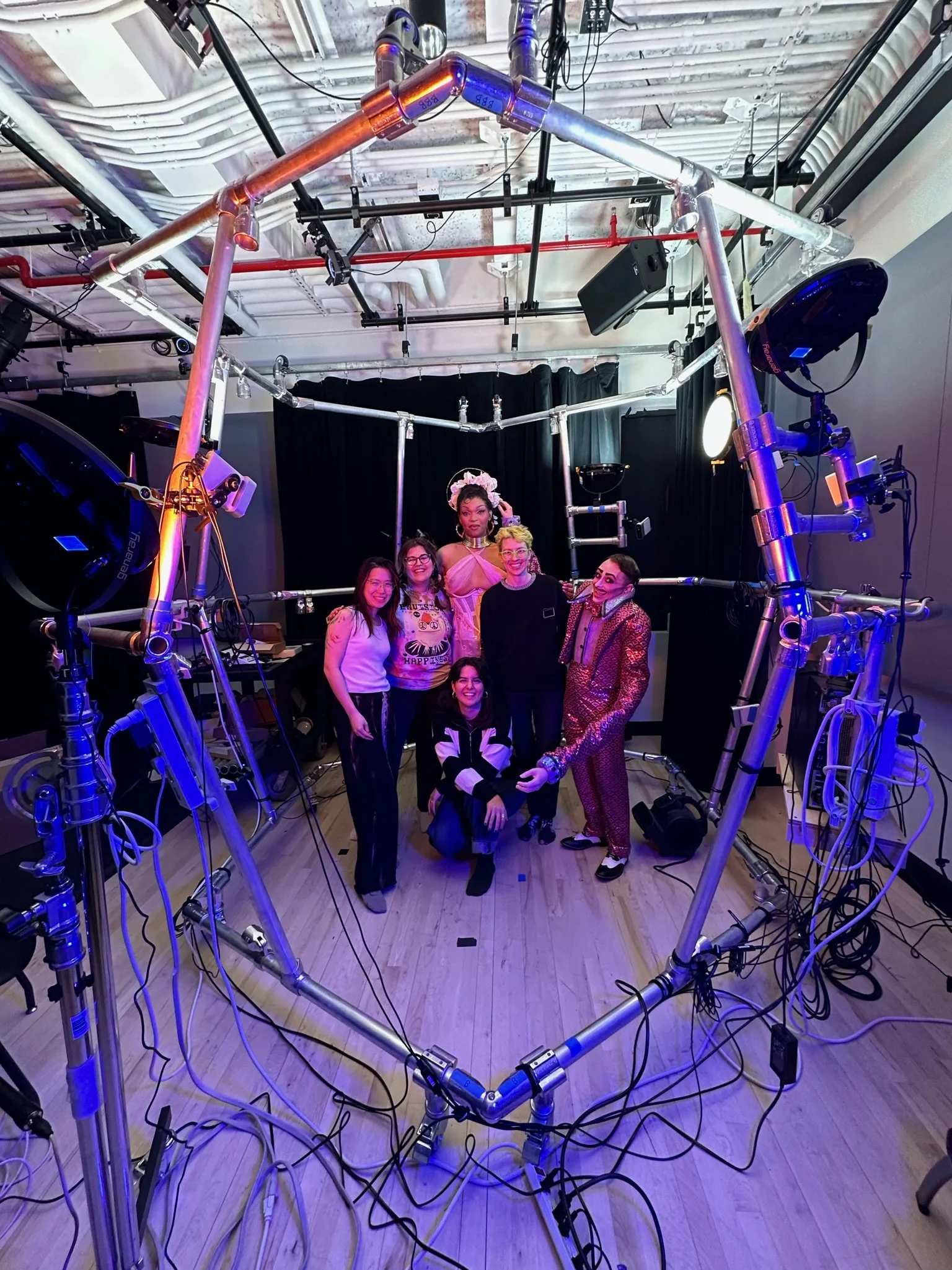Group members: Kay Wasil, Elif Ergin, and Cindy Hu
Idea
For our final project in Alan’s New Portraits class we need to make some volumetric captures using the Depthkit system, post-process, and make either a Unity project or some WEBGL assets for a live stream. This includes getting a subject, calibrating the systems, conducting interviews, lighting, and recording sound. Kay was super generous in opening up their community to us and they did a lot of hard work putting out an open call for drag performers to come into 370 and be our beautiful subjects!
Process
We booked out the Media Commons last Friday night to capture two performances. NYC-based performers Charlotte Harlotte and Sweaty Eddie generously shared their time and talents with us. We only had a 3 hour block of time so we had to move kind of quickly to make sure we could film everything we needed.
Calibration
First step is always calibrating the Depthkit system. We made super quick work of this the first time… but then we realized that the angles of the cameras were off because we couldn’t see feet through some of the camera views. Do the heavy cables pull the cameras down?
One question I do have is that after fixing the camera+sensor angles and then redoing the calibration in the original project, it seemed like the accuracy/precision went down. Does it break a project when adding new calibration points to an existing project? We decided to make a new project and start calibration over again, which seemed to work! Not sure if anyone recorded the final stats of our calibration but we got there eventually.
Lighting
After getting calibrated and checking all the camera views we moved onto lighting. There were still quite a few blue light flares which we worked on removing. This is also super weird because we fixed all the lighting in last class, right? Maybe the lights weren’t locked in place and gravity pulled them down too?
We set up a pink and orange light for Charlotte which looked SO good!
Our gorgeous performer Charlotte!
Sound
We wanted to record some interview questions so we set up a Zoom recorder. Here’s Elif while she’s really serious about the boom.
Filming
❤️❤️❤️
This experience was honestly so fun and super special! We were able to back up our files onto a hard drive and now I need to start reading up on the Unity setup.























